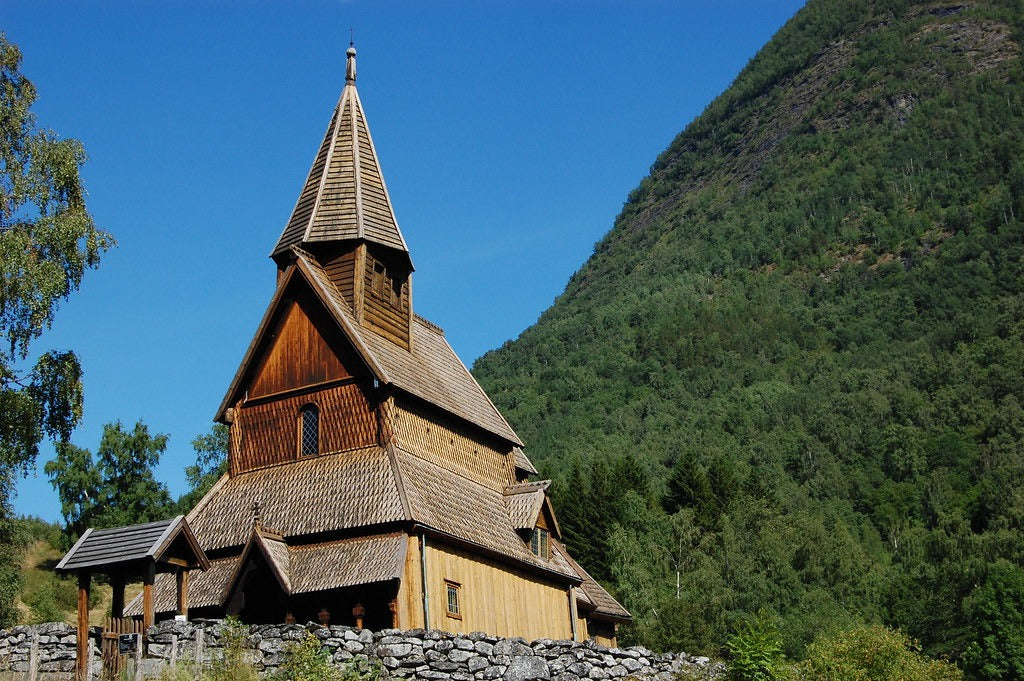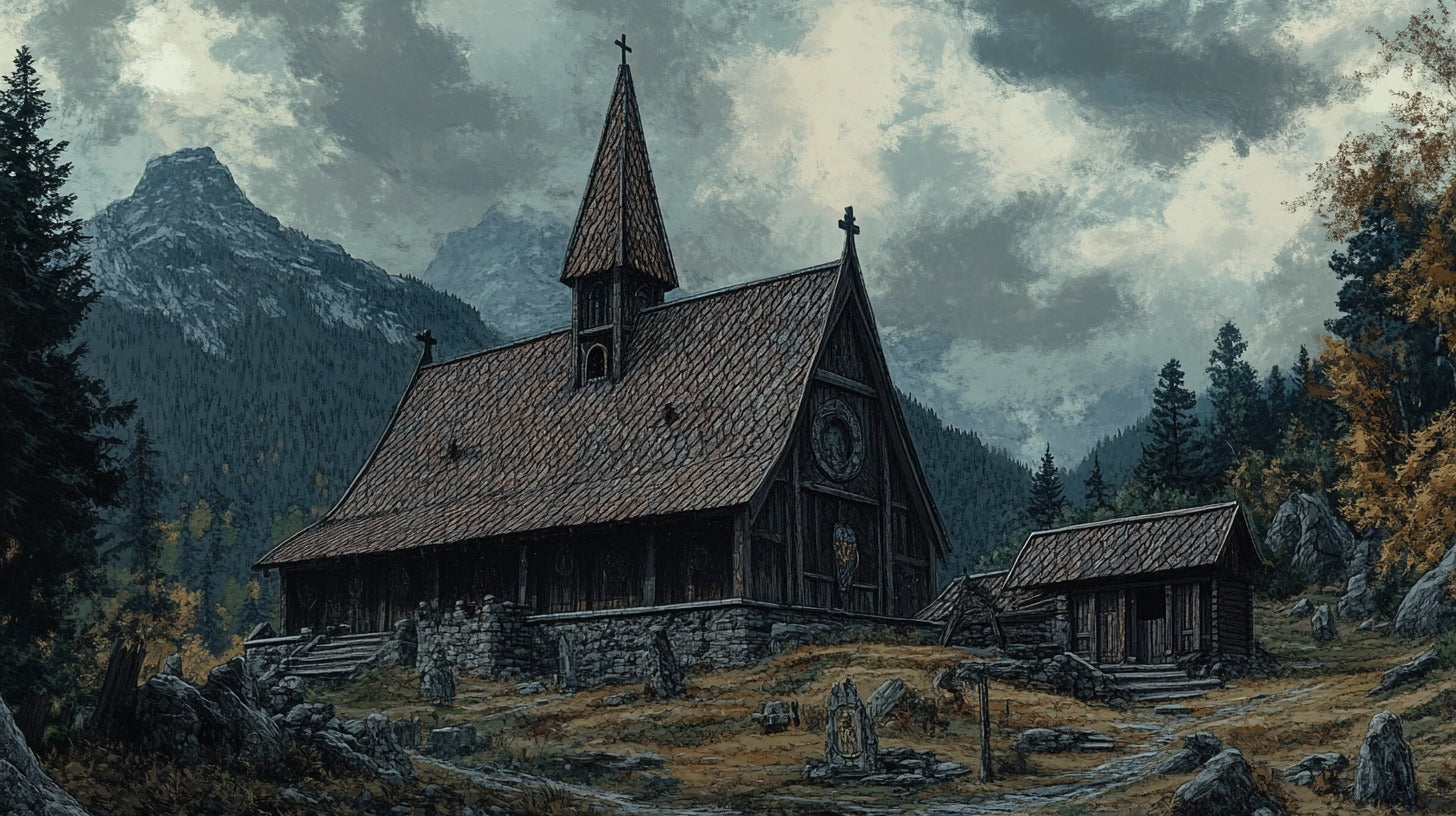
Carl Jung's Odin: Ancient God, Modern Psyche
Wisdom and madness, creation and destruction – these dualities dance at the heart of human nature, embodied in the figure of Odin, the Norse god of knowledge and war. But what if this ancient deity held a key to understanding our modern psyche? This is the proposition put forth by Carl Jung, whose interpretation of Odin as an archetype continues to challenge and enlighten us.
Introduction to Carl Jung and Archetypes

Jung's Concept of the Collective Unconscious
Imagine, if you will, a vast underground ocean, its dark waters teeming with the accumulated experiences and instincts of our species. This is how Jung envisioned the collective unconscious – a shared reservoir of knowledge and wisdom that exists beyond our individual awareness. It's a concept as vast and mysterious as the nine worlds of Norse mythology, interconnected by the roots of Yggdrasil, the world tree.
Understanding Archetypes in Jungian Psychology
Within this oceanic unconscious, Jung identified recurring patterns and symbols he called archetypes. These are not mere images or ideas, but rather primordial, universal templates that shape our thoughts, behaviors, and experiences. They are the characters in the grand narrative of human existence, as enduring and influential as the gods and goddesses of ancient pantheons.
Odin: The Norse God of Wisdom and War

Odin's Role in Norse Mythology
To truly grasp Jung's interpretation of Odin as an archetype, we must first acquaint ourselves with this complex deity. Odin, the Allfather of Norse mythology, is a figure as multifaceted as a finely cut gemstone, each facet reflecting a different aspect of the human experience.
The Many Faces of Odin
Odin is not merely a god of war, though his ravens Huginn and Muninn (Thought and Memory) often circle battlefields. He is also the patron of wisdom, poetry, and magic. One-eyed, having sacrificed an eye for knowledge, Odin embodies the eternal human quest for understanding, even at great personal cost. His ceaseless pursuit of wisdom, his mastery of runic magic, and his role as a psychopomp guiding the dead to the afterlife all speak to the depth and complexity of this figure.
Jung's Interpretation of Odin as an Archetype

The Wotan Essay: Jung's Analysis of the Germanic Psyche
In 1936, as storm clouds gathered over Europe, Jung penned his seminal essay "Wotan," delving into the resurgence of Germanic paganism and the psychological forces at play in the rise of National Socialism. Here, Jung posited that Odin, or Wotan, represented a powerful archetype within the Germanic collective unconscious – one that had lain dormant for centuries, only to awaken with terrifying force.
Odin as a Representation of the Collective Unconscious
Jung saw in Odin a manifestation of the wild, untamed aspects of the human psyche. Like the god's furious ride across the sky with his Wild Hunt, Jung believed that when suppressed or ignored, these primal energies could erupt into consciousness with devastating consequences. The Odin archetype, in Jung's view, embodied both the creative and destructive potential of the collective unconscious.
The Odin Archetype in Modern Context

Odin's Hunt / Photo: August Malmström
Manifestations of the Odin Archetype in Contemporary Society
But what of Odin in our modern world? Though we may no longer sacrifice to the gods of old, the archetypes they represent continue to exert their influence. We might see echoes of the Odin archetype in charismatic leaders who seem to channel a primal energy, in the relentless pursuit of knowledge that drives scientific discovery, or in the creative frenzy of artists and poets.
The Shadow Side of the Odin Archetype
Yet, as with all archetypes, Odin has his shadow side. The same force that inspires great leaps of understanding can also lead to destructive obsession. The charisma that unites can also be used to manipulate and control. In examining the Odin archetype, we are forced to confront the duality inherent in human nature – the capacity for both transcendent wisdom and terrible destruction.
Psychological Implications of the Odin Archetype

Individual and Collective Confrontation with the Odin Archetype
Jung believed that confronting and integrating archetypes was crucial for psychological health, both for individuals and societies. The Odin archetype challenges us to acknowledge our own capacity for both wisdom and madness, for creation and destruction. It asks us to look unflinchingly into the depths of our own nature, much as Odin gazed into the waters of Mimir's well.
Integration and Individuation: Working with the Odin Archetype
The process of individuation – becoming one's true self – often involves wrestling with archetypal energies. In the case of the Odin archetype, this might mean finding healthy outlets for our thirst for knowledge, channeling our charisma and leadership abilities for the greater good, or learning to harness our creative energies without being consumed by them.
Criticism and Controversies Surrounding Jung's Interpretation

Odin, in his guise as a wanderer, by Georg von Rosen (1886)
Academic Debates on Jung's Wotan Essay
Jung's interpretation of Odin and his analysis in the Wotan essay have not been without controversy. Some scholars argue that Jung's understanding of Norse mythology was limited, and that he may have oversimplified complex cultural and historical factors in his psychological interpretation. Others question the very concept of archetypes as universal patterns, suggesting that they may be more culturally specific than Jung believed.
Modern Perspectives on Jung's Archetype Theory
In the decades since Jung first proposed his theory of archetypes, our understanding of psychology, neuroscience, and cultural anthropology has advanced considerably. While many still find value in Jung's ideas, others propose alternative models for understanding the shared patterns of human experience and behavior. The debate continues, as lively as the exchanges in Odin's great hall of Valhalla.
Conclusion
As we stand at the crossroads of past and future, Jung's perspective on Odin as an archetype continues to offer valuable insights into the human psyche. Like the god himself, hanging on the world tree in search of wisdom, we too must be willing to sacrifice our preconceptions and certainties if we are to gain true understanding.
The Odin archetype reminds us of the power of the unconscious, the importance of confronting our shadow selves, and the eternal human quest for meaning and knowledge. Whether we see Odin as a literal deity, a psychological construct, or a poetic metaphor, his presence in our collective imagination continues to shape our understanding of ourselves and our world.
As we navigate the complexities of modern life, perhaps we would do well to heed the wisdom of both Jung and the old Norse tales. By acknowledging and integrating the archetypal forces within us, we may find the strength and wisdom to face the challenges of our time, much as Odin faced Fenrir at Ragnarök – with courage, understanding, and a deep acceptance of the cyclical nature of existence.
In the end, Jung's interpretation of Odin as an archetype invites us all to embark on our own quests for self-knowledge. For in understanding the gods that dwell within our psyche, we come to understand ourselves – and in understanding ourselves, we take the first steps towards shaping a better world.
FAQs
- How did Carl Jung's concept of archetypes differ from Freud's theories?
While Freud focused primarily on individual experiences and personal unconscious, Jung proposed the existence of a collective unconscious shared by all humans, containing universal archetypes like the Odin figure.
- Can the Odin archetype be seen in modern leaders or public figures?
Yes, aspects of the Odin archetype can be observed in charismatic leaders, visionary thinkers, or individuals who embody both wisdom and a potentially destructive force of will.
- How might understanding the Odin archetype benefit personal growth?
Recognizing the Odin archetype within oneself can lead to a deeper understanding of one's drives for knowledge, power, and creativity, potentially aiding in personal development and self-awareness.
- Is Jung's interpretation of Odin as an archetype universally accepted in psychology?
No, while influential, Jung's theories, including his interpretation of Odin, are not universally accepted and have faced criticism from various academic and psychological perspectives.
- How does the Odin archetype relate to other archetypes in Jungian psychology?
The Odin archetype interacts with other Jungian archetypes like the Wise Old Man, the Trickster, and the Hero, representing different aspects of the human psyche and its development.
References
Jung, C.G. (1936). Wotan. Neue Schweizer Rundschau.
von Franz, M.L. (1975). C.G. Jung: His Myth in Our Time. New York: G.P. Putnam's Sons.
Rowland, S. (2010). C.G. Jung in the Humanities: Taking the Soul's Path. New Orleans: Spring Journal Books.
Tacey, D. (2001). Jung and the New Age. London: Routledge.
Lindow, J. (2001). Norse Mythology: A Guide to Gods, Heroes, Rituals, and Beliefs. Oxford University Press.
"Carl Jung. for Pifal." by Arturo Espinosa is licensed under CC BY 2.0.








